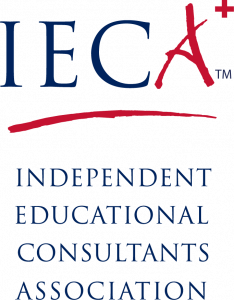Getting into the college of choice might weigh heavily on your mind at the moment but the odds are that the prospect of affording college costs looms even larger. And, if financial aid is critical to your ability to attend that college—or any college for that matter—now is the time to get organized around the possibilities. The following tips are intended to help bring order to the financial aid application process.
1. Understand the five sources of funding for college. The first source is—no surprise—the student’s family. The second and third are the federal and state governments in amounts that can total more than $10,000 (grants, loans and work study) per year. Colleges then can choose to offer assistance that addresses the difference between the total cost of attendance and the combined resources coming from the family and the state/federal governments. The fifth source of funding involves service organizations and places of employment that offer scholarships. After the “expected family contribution,” each source is integral to the overall financial support you might receive.
2. Familiarize yourself with the required forms and deadlines. Funding from sources beyond the family won’t just appear because you need it. You’ll need to complete the (FAFSA) Free Application for Federal Student Aid to determine your eligibility (“Expected Family Contribution” or “EFC”) for federal, state and, in many cases, institutional funding. Plan to complete the FAFSA as soon after January 1, 2012 as possible. Many private institutions require the (CSS Profile) College Scholarship Service Profile as well. This should be completed as soon as possible. Some colleges also require the completion of their own forms. Make sure you know the forms that are required for each college and submit them at the earliest possible date. Waiting until the admission decisions are known to begin the financial aid process is extremely risky as most institutions “spend down” their financial aid budgets as they proceed through the selection process.
3. Discuss cost/affordability at home. Communication about cost and affordability at home is critical to good decision-making. Make sure everyone is on the same page with regard to how much you are able/willing to spend on a college education. This “ounce of prevention” can help to avert stressful conversations about paying for college at the end of the process.
4. Manage expectations. Know where your credentials will be most competitive and set your (college) expectations accordingly. Hundreds of millions of financial aid dollars will be awarded each year—and they will go to the students who are valued most at the institutions in question.
5. Be wary of online forecasters. For that matter, be wary of any service that suggests it can optimize your financial aid potential. While parameters for determining financial need seem to be predictable, the processes of admitting students and awarding financial aid are heavily nuanced across institutions. For example, colleges will engage in subjective practices such as differential needs analysis (using the methodology, either FAFSA or Profile, that allows them to justify the award they want to make) and preferential packaging (putting together different amounts of grant, loan and work study that reflect the value attached to a given candidate) to leverage the enrollments of students they want the most. As a result, online forecasters, including the net price calculators found on college websites, rarely provide an accurate picture of your likely out-of pocket expenses should you be admitted.
Excerpts from The Admission Game Peter Van Buskirk
Associate Member, IECA
College Resource Center, LLC
CSU Cunningham Center
3100 Gentian Blvd., Suite 001A
Columbus, GA 31907
706-366-2993



